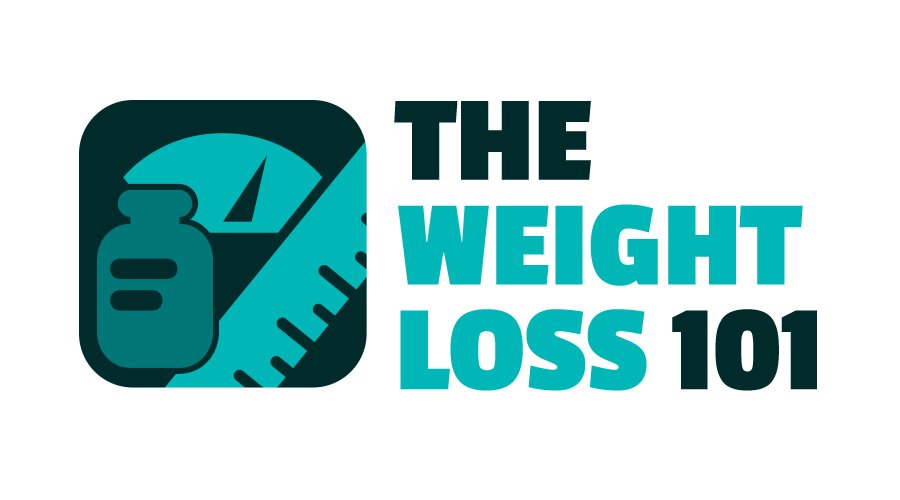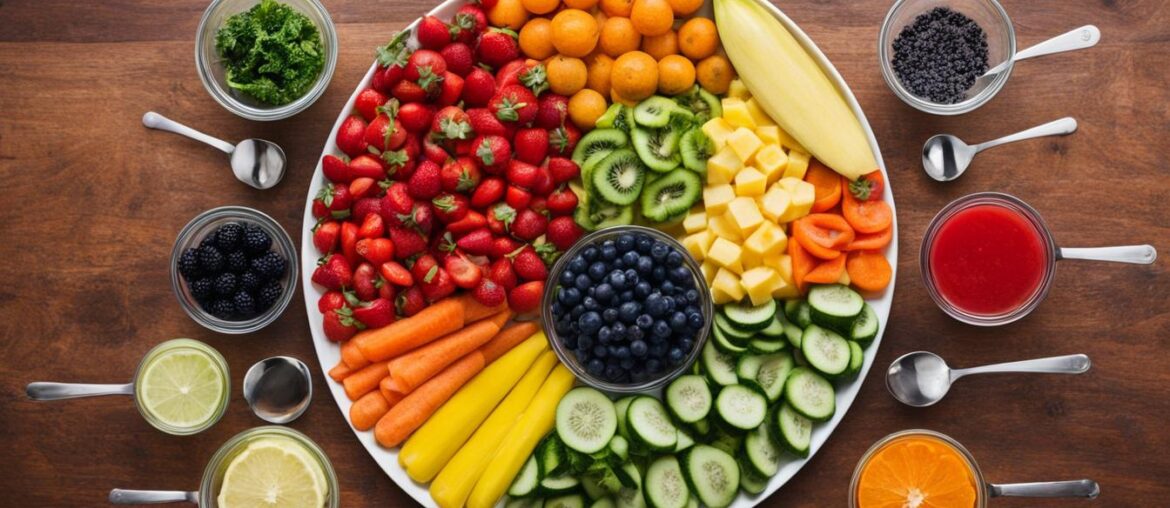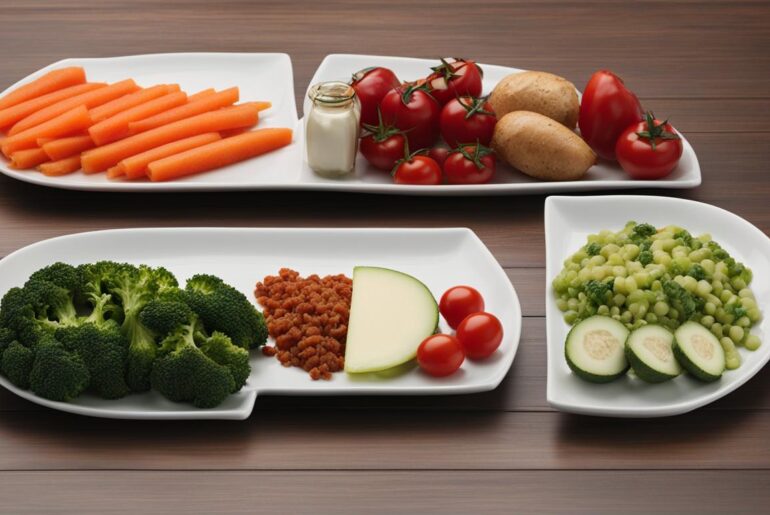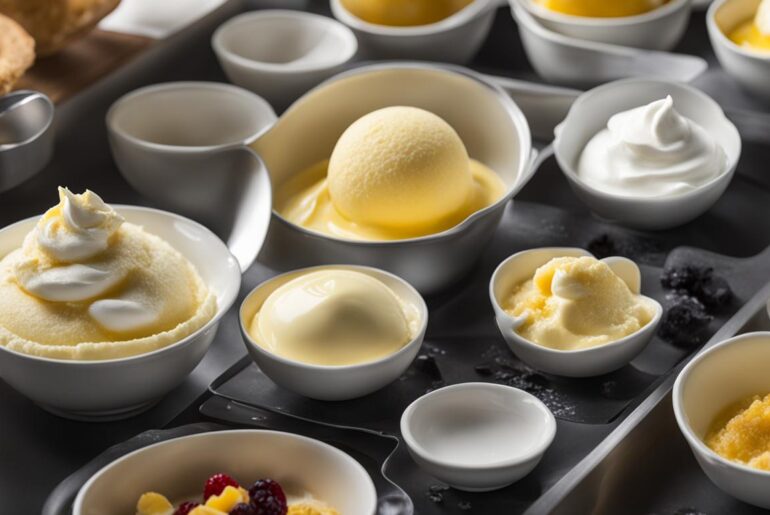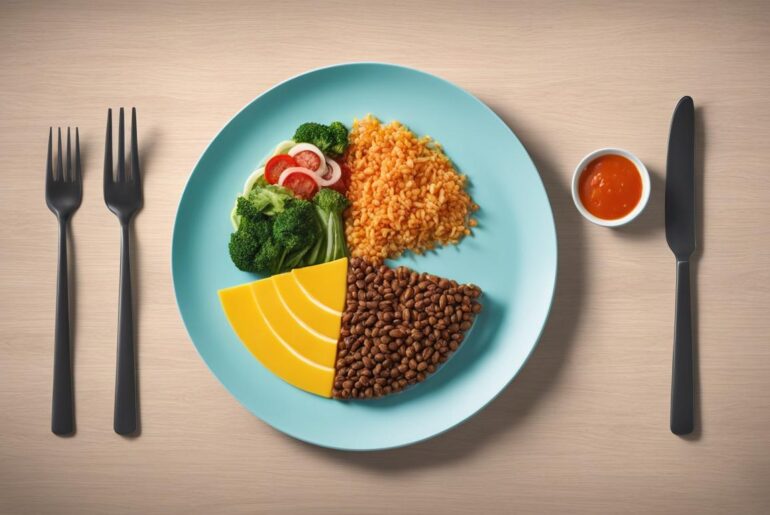Estimating food portions accurately is vital for maintaining healthy eating habits and ensuring optimal nutrition (check out my post on healthy eating habits here). Whether you’re looking to control your portion sizes for weight management or simply want to make sure you’re getting the right balance of nutrients, having the ability to estimate food portions accurately is key.
In this comprehensive guide, I will share various estimation techniques and strategies to help you estimate food portions accurately. These practical tips are based on factual data from trustworthy sources, and they can be easily incorporated into your daily routine. By following these guidelines, you’ll be on your way to mastering portion control and making informed choices about what you eat (check this post out).
Key Takeaways:
- Learning to estimate food portions accurately is essential for maintaining a healthy diet.
- Using your hands and favorite sporting items can serve as convenient measuring tools for portion estimation.
- Dividing your plate into sections can help you visualize portion sizes and ensure a balanced meal.
- Practicing measuring and portioning at home can enhance your estimation skills.
- By implementing these portion control tips, you can develop a better understanding of portion sizes and make healthier choices (check out my post on portion control tips here).
Using Your Hands and Favorite Sporting Items for Portion Estimation
When it comes to portioning your food accurately, one simple and readily available tool you can use is your own hands. Each part of your hand can serve as a convenient measuring tool, helping you estimate portion sizes more accurately. By comparing measured servings to the size of your hand, you can get a clearer idea of what a proper portion should look like.
For example, cupping your hands together creates a space that can hold approximately 2 cups of food, which is generally the recommended portion size for a complete meal. By visualizing this measurement, you can ensure that you’re not over or underestimating your portions.
In addition to using your hands, you can also make use of some of your favorite sporting items to help you visualize portion sizes accurately. These objects, such as softballs, baseballs, tennis balls, golf balls, and dice, can serve as helpful references when estimating portion sizes.
By associating specific portion sizes with familiar objects, you can develop a better sense of portion control and ensure that you’re consuming the right amount of food for your nutritional needs.
Dividing Your Plate for Portion Control
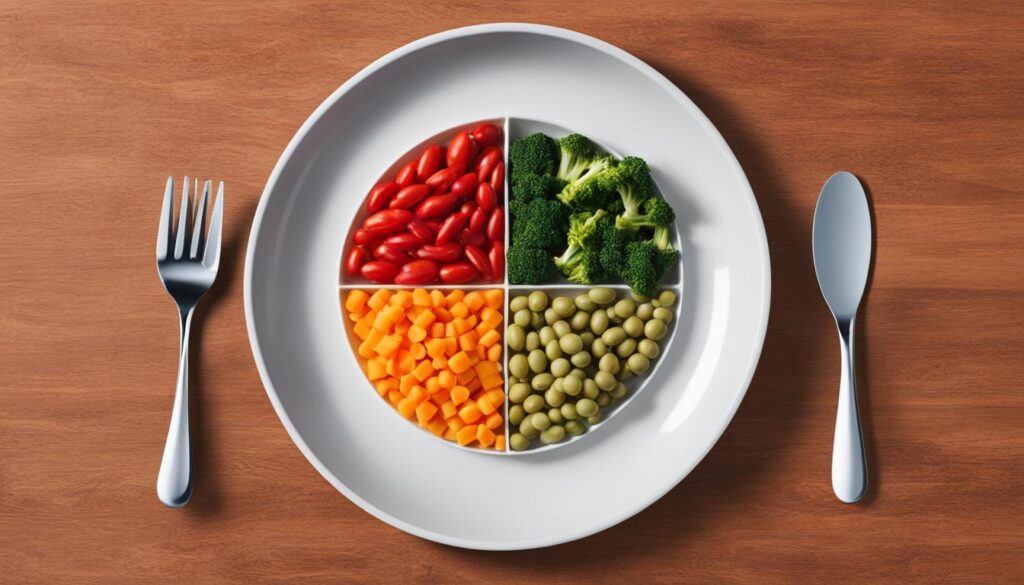
Another effective method for portion control is to divide your plate. The plate method provides a visual guide for portion sizes and helps ensure a balanced meal.
Divide a 10-inch plate so that a quarter is reserved for protein-based foods, another quarter for starch-based foods, and the remaining half for fruits and vegetables. Note that fruit should not make up a full half of the plate, while vegetables can constitute the entire half. This division of your plate helps you see not only what portion sizes you should eat but also how they should fit into your entire meal.
It’s important to follow this portion size guide to maintain a well-rounded and nutritious diet (see my post here). By dividing your plate according to these proportions, you can easily visualize and control the amounts of different food groups you consume. This portion control strategy promotes balanced eating and allows you to maintain portion estimate accuracy (see my post here).
Benefits of Dividing Your Plate
- Creates a balanced meal: Dividing your plate ensures that you get a good mix of protein, carbohydrates, and vegetables in each meal, leading to a balanced diet.
- Controls portion sizes: By visually separating different food groups, you can easily monitor and control the size of each portion, preventing overeating.
- Promotes variety: Dividing your plate encourages you to include a variety of foods in your diet, leading to a wider range of nutrients.
- Helps with weight management: Following the plate division method can help you manage your weight by controlling portion sizes and ensuring a well-rounded diet.
Implementing the plate method for portion control is a simple yet effective strategy to maintain a healthy diet. By incorporating this portion size guide into your daily meals, you can easily estimate and control the portions of different food groups, promoting portion estimate accuracy and overall wellness.
Take a look at the visual representation below to see how a divided plate can guide your portion control:
Food Group Percentage of Plate Protein (meat, poultry, fish, tofu) 25% Starch (rice, pasta, bread, potatoes) 25% Fruits 25% Vegetables 50%
Practicing Measuring and Portioning at Home
To improve your ability to estimate portions accurately, I recommend practicing measuring out portions at home. This hands-on approach will help you develop a better understanding of portion sizes and enhance your portion estimate accuracy. Here are some steps to follow:
- Use Measuring Cups and a Food Scale: Utilize measuring cups and a food scale to measure out various types of food portions for your meals. This will provide you with precise measurements and ensure calculating food portions accurately.
- Pay Attention to Visuals: While measuring, pay close attention to what the portions actually look like visually. This practice will help calibrate your ability to recognize portion sizes without relying solely on tools.
- Measure Portions Weekly: Set aside a specific day each week to measure out portions for your meals. This consistent practice will further enhance your estimation skills and make portioning a regular part of your routine.
By incorporating these practices into your daily routine, you will gradually become more confident in estimating food portions accurately and measuring food portions with ease. Remember, accurate portion estimate accuracy is key to maintaining a healthy diet and controlling portion sizes.
Benefits of Practicing Measuring and Portioning at Home
Practicing measuring and portioning at home has several benefits:
- Improved Portion Estimate Accuracy: Regular practice will refine your portion estimation skills, allowing you to gauge portion sizes more accurately.
- Increased Confidence: With consistent practice, you will gain confidence in your ability to estimate and measure food portions, making portion control easier.
- Enhanced Nutrition: Accurately measured portions ensure you’re consuming the right amount of nutrients, supporting a balanced and healthy diet.
By implementing these practices, you can take control of your portion sizes and make more informed choices when it comes to your food consumption.
Quick Reference Guide for Measuring Food Portions
| Food Item | Portion Size |
|---|---|
| Chicken breast | 3 oz (about the size of a deck of cards) |
| Pasta (cooked) | 1/2 cup (about the size of a hockey puck) |
| Rice (cooked) | 1/2 cup (about the size of a cupcake wrapper) |
| Broccoli (steamed) | 1 cup (about the size of a baseball) |
| Apple | 1 medium-sized apple (about the size of a tennis ball) |
Use this quick reference guide as a starting point for measuring common food portions. Remember, portion sizes may vary depending on your individual dietary needs and goals.
Conclusion
Accurately estimating food portions is vital for maintaining a healthy diet. By implementing effective portion control tips and employing estimation techniques for food portions, you can ensure that you are consuming the right amount of food for optimal nutrition.
One of the simplest ways to estimate portion sizes is by using your hands and favorite sporting items. Comparing measured servings to your hands and familiar objects can help you visualize the appropriate portion sizes. Additionally, dividing your plate and allocating specific portions for protein-based foods, starch-based foods, fruits, and vegetables provides a helpful visual guide for portion control.
Practicing measuring and portioning at home is another valuable strategy to improve your estimation skills. By using measuring cups and a food scale, you can accurately measure various food portions and develop a better understanding of what they look like visually (check this post out). Engaging in this practice regularly will boost your confidence in estimating food portions accurately.
By following the techniques and strategies provided in this guide, you can develop the necessary skills to accurately estimate food portions. Implementing these portion control tips into your daily routine will contribute to healthy eating habits and a well-balanced diet, supporting your overall health and well-being.
